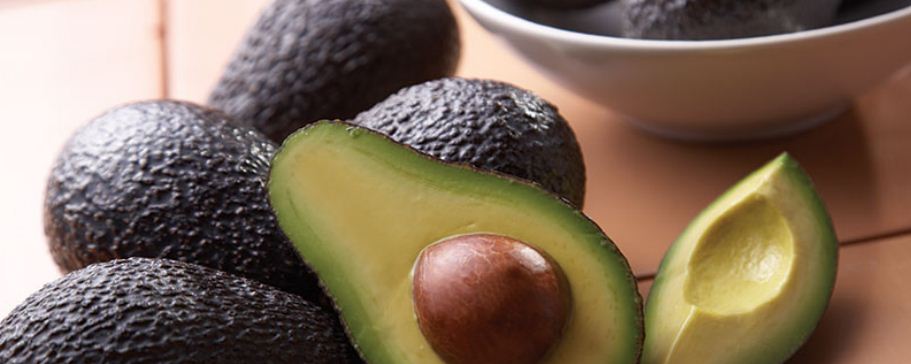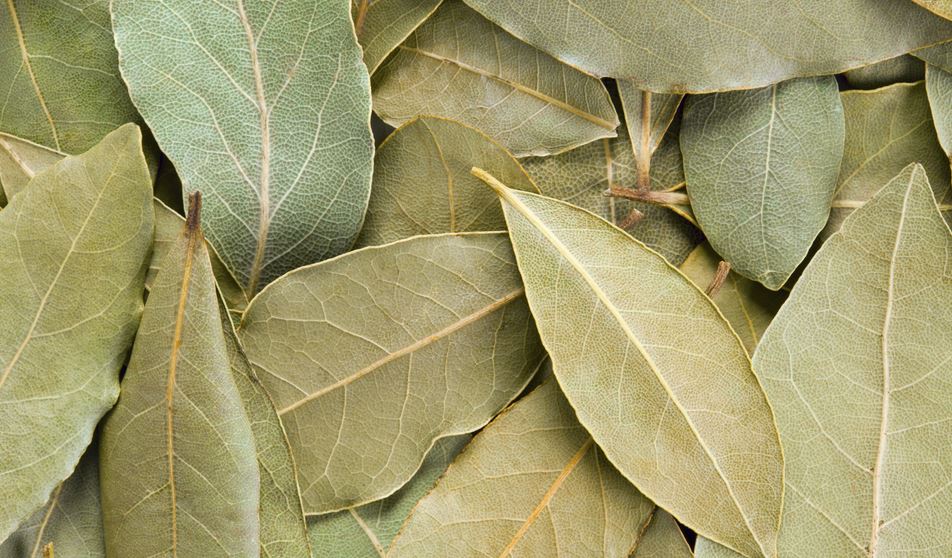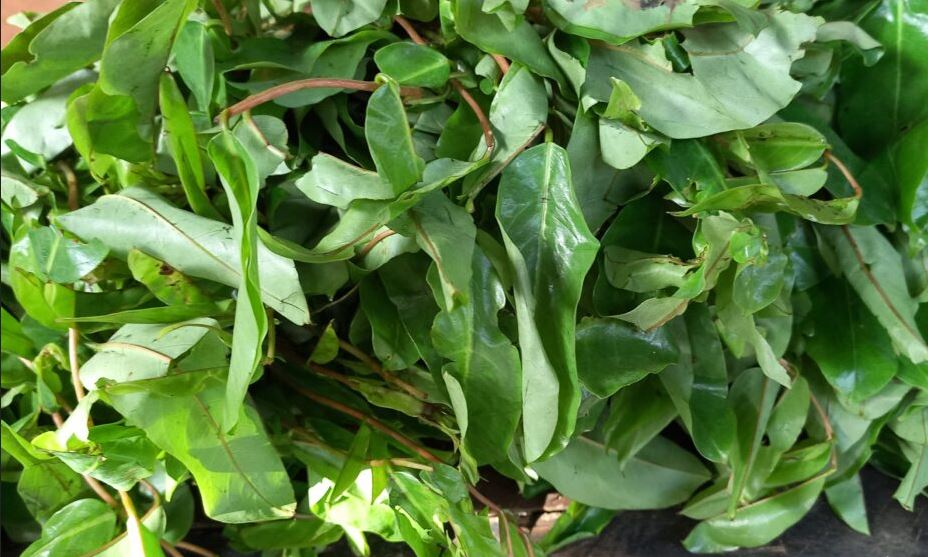About Health Benefits of Avocado Fruit

Avocado is a creamy green fruit that is remarkably nutritious. No matter your location, you can effortlessly incorporate it into your daily routine. Whether you desire more energy or a healthy heart and skin, the avocado has benefits supported by science.
Eating avocados has many health benefits. This includes heart health, weight loss, and more. No fruit can beat the avocado. Let’s explore why this fruit deserves a spot on your plate!
Why Avocado Stands Out
Avocados grow in many places, including tropical and temperate parts. Hence, it can be found easily in the market. A medium avocado weighing CTG (approx.) contains around 227 calories with 15 grams of healthy fats and 9 grams of fiber and various vitamins and minerals.
Although avocados are not low-calorie foods, their nutrients make them an excellent choice if you want to eat them better. I reviewed dependable studies to confirm that these avocado health benefits are accurate and relevant, not guesswork. Here are seven good reasons to eat avocados and how to incorporate them into your diet.
Seven avocado health benefits to eat it constantly.
1. Supports Weight Management and Keeps You Full
Do you ever eat a meal and feel hungry again too soon? Avocado can help solve that. This medium-sized fruit has 9 grams of fiber, which helps keep your stomach happy for longer.
A 2013 study published in Nutrition Journal found that when half an avocado was added to lunch, attendees were less hungry and craved other foods. This is good for people who don’t want to snack. Its 15 grams of monounsaturated fats provide constant energy without the unhealthy effects of processed fats.
Eating avocado whenever you want is okay. Consuming 227 calories daily is excellent for you, according to a 2023 study conducted in the journal of the American Heart Association. It was shown that people who eat avocados regularly did not add on weight.
Some of them even lost weight, more specifically in the abdomen. It won’t help you lose weight quickly, but it does help you eat less overall and stay energized.
How to Eat Avocado for Weight Management
Take half an avocado, chop it into slices, and add it to a salad with greens and protein. Blend it with a banana and milk for a smoothie that will last you until your next meal.
2. Promotes Heart Health
Avocado promotes heart health and ensures it stays strong and functioning for as long as possible. Avocado contains 15 grams of monounsaturated fats in a medium fruit, which helps lower harmful cholesterol levels and has cardiovascular benefits.
These fats help to keep levels of ‘good’ cholesterol – ‘good’ for the heart. Avocado’s potassium (975 mg) helps regulate blood pressure and reduce heart disease and stroke risk (and the same for diabetes).
A study done in 2022 found that two or more servings a week can reduce your risk of developing cardiovascular diseases by 21%. This fruit is a natural choice if you want your heart to be strong.
How to Enjoy Avocado for Heart Health
Use mashed avocado on whole-grain bread instead of butter.
Take mashed avocado to a whole new level to enjoy with tortilla chips. Mix it with chopped tomatoes and lime juice to make heart-friendly salsa with baked chips.
3. Enhances Eye Health
In today's world of light and screens, eye protection is essential. Avocados contain lutein and zeaxanthin, which are eye-protecting antioxidants. An average avocado provides about 0.4 milligrams of these nutrients, which accumulate in the retina and prevent damage by UV rays.
A study published in 2017 in the journal Nutrients showed that foods high in lutein, including avocado, may lower the risk of cataracts and vision degeneration with age. Avocado's nutritional content enhances clear vision regardless of studying, working, or enjoying it.
How to Eat Avocado for Eye Health
Add diced avocado to a leafy green stew or salad.
"Pair it with scrambled eggs for breakfast to support your vision."
4. Nourishes Your Skin
Your skin needs to be healthy since you are exposed to the sun and pollution daily. Avocado makes an excellent creamy, spicy addition to anything. Combine it with scrambled eggs for a breakfast that improves your vision.
According to a study in the Journal of Cosmetic Dermatology in 2022, daily avocado consumption for eight weeks makes your skin more elastic and firm. You can also deface a mask by mashing it, but eating it works just as well from the inside. While it won’t eliminate spots in a day, it’s a nice way to have soft, firm skin.
How to Use Avocado for Skin Health
Smash it with a teaspoon of honey for a 10-minute face pack, then rinse off.
You can eat it with boiled potatoes or rice to nourish the skin.
5. Improves Digestion
The avocado’s 9 grams of fiber (30% of your daily requirement) make everything work well. Fiber keeps things moving in your stomach, reducing post-meal bloating and ensuring proper bowel movements.
According to health experts at the National Institutes of Health, avocado also nourishes the beneficial bacteria present in your gut that help break down food. If you eat starchy and fatty food, avocado adds extra fiber to balance that.
How to Eat Avocado for Digestion
Add slices to a fish or vegetable stew for extra fiber.
Mash it with some garlic to enjoy with sliced cucumbers for a light snack.
6. Benefits during Pregnancy
For expectant mothers, avocado offers valuable support. Eating half an avocado gives you 20% of your daily folate, essential for your baby’s healthy development, and 20% of vitamin B-6, which studies show can help with morning sickness.
The healthy fats in avocados also provide energy during pregnancy, when nutrition is essential. This makes avocado a practical addition to meals for women looking to remain strong and comfortable during pregnancy.
How to Eat Avocado During Pregnancy
Mash half, mix with lemon juice, and spread with the bread.
Mix it up with berries and water for a nutritious drink.
7. Reduces Inflammation
When your body experiences stress due to exercise or demand, avocado can help bring calmness. Its vitamins like E and Lutein fight inflammation that can harm joints and muscles. A 2013 study on avocado-soybean extracts showed promise for alleviating arthritis. Whole avocados may not be as potent, but they can still help. This advantage is minor, but it works towards comfortable motion.
How to Eat Avocado for Inflammation
Combine it with a dash of ginger for an anti-inflammatory drink.
Sprinkle on sliced avocado to your steamed veggies or grilled meat for relief.
What’s Packed Inside an Avocado?
Here’s the breakdown of a medium avocado (136 grams)
Calories: 227—fuel for your day.
Healthy Fats: With 15 grams of monounsaturated fats, it is filling and heart-healthy.
Fiber: 9 grams—keeps digestion smooth.
975mg of potassium helps control blood pressure.
Vitamins
B-6 (20%)—boosts energy and reduces nausea.
C (17%)—strengthens immunity.
These statistics are what the USDA and other research, like JAHA and Nutrients, show. Avocado nutrition is a real deal—no hype needed.
How to Include Avocado in Your Diet Every Day
Avocados offer low prices and versatile utility in the city or the countryside. Get It Anywhere: How to Enjoy Avocado Every Day. Avocados are budget-friendly and versatile.
Breakfast Options
Toast Topping: Spread mashed avocado on whole-grain toast with a pinch of salt.
Egg Pairing: Cook eggs how you like and add avocado slices for a filling start.
Add half an avocado, some pineapple, and water for a refreshing smoothie.
Lunch Ideas
Put together a salad mix of greens, tomato, chicken, and chunks of avocado.
Combine mashed avocado, chopped onions, and lime juice for a fresh dip with crackers.
Trade Mayo For Avocado: Switch out the mayo for the creamy greenness of avocado on your favourite sandwich.
Dinner Suggestions
Stew Slice: Cut avocado and put in a vegetable or meat stew.
For a creamy touch, please put it on grilled fish, chicken, or other meat.
Mix mashed avocado with cooked rice and a pinch of seasoning.
Snack Solutions
Mash some avocado with some seasoning and enjoy with carrot sticks for a quick dip.
Pair it with mango or apple for a sweet and tasty combination.
Cut in the center, sprinkle with some salt, and enjoy with a spoon.
Setting the Record Straight on Avocado Health Benefits
People may even claim that avocados help cure cancer or make skin glow instantly. Let’s face it. There’s just no scientific evidence. Some lab studies suggest that it may help kill cancer cells. However, we need more human studies to know for sure. It will not bleach your skin or zap acne—a myth.
What’s true? Studies in JAHA and Nutrients affirm avocado benefits for the heart, eyes, and digestion. At 227 calories per serving, it’s not a “diet food,” so balance it with your other meals for best results.
Why Avocado Should Be Your Go-To
You can find avocados anywhere. It’s practical and palatable, and anyone can use it. It grows worldwide, is usually reasonably priced, and fits into many meals. Try using it for half a day—cut, mash, or blend it—and see how it goes. Your heart is steady, your eyes are clear, and your skin is firm. You can enjoy these avocado recipes whether cooking for a single or many. Try it today to see the results; your body will thank you!
Nutritional Contents in Avocado Pears & Values
|
Nutrients |
Amount |
|
Energy |
160 Kcal |
|
Carbohydrates |
8.53g |
|
Protein |
2.0g |
|
Total fat |
14.66g |
|
Cholesterol |
0 mg |
|
Dietary Fibre |
6.7g |
|
Folates |
81mg |
|
Niacin |
1.738mg |
|
Pantothenic acid |
1.389 mg |
|
pyridoxine |
0.257mg |
|
Riboflavin |
0.130mg |
|
Thiamin |
0.067mg |
|
Vitamin A |
0.00365mg |
|
Vitamin C |
10mg |
|
Vitamin E |
2.07mg |
|
Vitamin K |
0.021mg |
|
Sodium |
7mg |
|
Potassium |
485mg |
|
Calcium |
12mg |
|
Iron |
0.55 mg |
|
Magnesium |
29 mg |
|
Manganese |
0.142mg |
|
Zinc |
0.64mg |
|
Carotene-ß |
62 µg |
|
Selenium |
0.0004mg |
|
Phosphorus |
52mg |
|
Carotene-&alpha |
24 µg |
|
Cryptoxanthin-ß |
28 µg |
|
Lutein-zeaxanthin |
271 µg |
Avocado Seeds
The seed of the avocado fruit is not poisonous. Instead, it is known for its medicinal and lifestyle characteristics. It is often sliced and left under the sun to dry well before being ground into powder.
In this form, Avocado seed is used to manage high blood pressure when used in oatmeal and can also be taken as weight loss tea; avocado seed powder has proven its effect on high blood pressure in the experiment.
Avocado seeds are an excellent natural remedy for high blood pressure. They contain a fat-soluble vitamin E substance, which has been shown to reduce the risk of stroke and heart attack by 40%.
For a long time, avocado seeds have been used in various countries to treat skin diseases such as psoriasis and acne. The presence of a person has also been found to reduce fungus growth on avocado leaves, making them perfect for use as a natural fungicide.
Therefore, avocado seeds are not poisonous except when consumed in excess, although there is no scientific backing on whether these seeds are toxic.
Origin of Avocado Pears
Avocado pears, a family of Lauraceae or Persea Americana, often called green gold due to their nutrient-rich flesh, have been a staple in diets worldwide for centuries.
Originating in Mexico and Central America, these fruits, often called an alligator, are now grown across the globe in various warm climates. This pear-shaped fruit is grown in most African countries, such as Ghana, Nigeria, Kenya, and South Africa.
How do you know when an avocado pear is ripe?
Knowing when an avocado pear is ripe as a fruit with a relatively short lifespan is essential. The ripeness of an avocado can be determined by examining its exterior and performing a gentle squeeze test.
Firstly, examine the avocado's skin. A ripe avocado has dark green skin that appears almost black. If the avocado has bright green skin, it is not yet mature; if the skin is brown, it is overripe.
Secondly, perform a gentle squeeze test. Hold the avocado in your palm and apply slight pressure with your fingers. A ripe avocado will feel slightly soft and yield to gentle pressure without feeling too mushy. If the avocado is too firm, it is not yet ripe; if it feels too soft, it is overripe.
It is important to note that the ripening process of an avocado can be accelerated by storing it in a paper bag with a banana or apple. These fruits emit natural gases that speed up the ripening process.
In conclusion, the ripeness of an avocado can be determined by examining its exterior and performing a gentle squeeze test. By mastering this skill, you can enjoy the perfect avocado every time.
What are some creative ways to use avocado pear in cooking?
Avocado pear has become increasingly popular due to its creamy texture and rich flavor. While it is commonly used in guacamoles and salads, there are numerous creative ways to incorporate this versatile fruit into your cooking.
FAQ
What type of dishes goes well with avocado pear?
Avocado pear is a versatile ingredient that can be used in various dishes. Avocado's creamy texture and mild flavor make it a popular addition to sweet and savory dishes.
If you're looking for inspiration for incorporating avocado pear into your meals, read on for ideas on what types of containers go well with this delicious fruit.
1. Salads—Avocado pear is an excellent addition to salads, adding creaminess to the dish. It pairs well with citrus fruits, like oranges or grapefruits, and nuts and seeds, like almonds or pumpkin seeds. It also goes well with greens like kale and spinach.
2. Toasts and sandwiches - Avocado toast has become a popular breakfast and brunch item, but avocado pear can also be used in sandwiches. It pairs well with smoked salmon, bacon, or chicken. You can add cheese or tomato slices to your sandwich for extra flavor.
3. Guacamole - No list of avocado pear dishes would be complete without mentioning guacamole. This classic dip is perfect for snacking and is easy to make with just a few ingredients. Avocado pear is the star in guacamole and pairs well with lime juice, cilantro, and diced tomatoes.
4. Smoothies - Avocado pear can add creaminess and healthy fats to your smoothies. It pairs well with fruits like bananas, berries, and mango. You can also add some spinach or kale for an extra boost of nutrients.
5. Pasta sauces - Avocado pear can be used as a base for a creamy pasta sauce. Blend avocado with garlic, olive oil, and herbs for a delicious and healthy sauce. It pairs well with whole wheat pasta and roasted vegetables.
6. Desserts - As mentioned earlier, avocado pear can be used to make a healthier version of chocolate mousse. It can also be used in smoothie bowls, in banana bread, or as a topping for ice cream or yogurt.
In summary, avocado pear can be used in various dishes, from breakfast to dessert. It's a versatile ingredient that can add creaminess, healthy fats, and nutrients to your meals. So the next time you're in the kitchen, consider incorporating some avocado pear into your dishes and enjoy its excellent health benefits and delicious flavor!
Is the skin of an avocado pear edible?
Yes, the skin of an avocado pear is technically edible. However, it is not commonly eaten due to its harsh and bitter taste. Most people only eat the flesh of the avocado, which is creamy and delicious.
The skin of an avocado is quite different from other fruit skins, such as apples or peaches, which are often eaten without issue. Avocado skin is rough and thick, making it difficult to chew and swallow. Additionally, it contains high amounts of tannins, which give it a bitter taste.
While it is possible to eat avocado skin, it is not recommended for most people. If you do choose to eat it, it is essential to thoroughly wash the avocado beforehand to remove any dirt or bacteria that may be present. You may also want to slice the avocado into small pieces to make it easier to eat.
In conclusion, while the skin of an avocado pear is technically edible, it is not commonly eaten due to its harsh and bitter taste. Most people only eat the creamy and delicious flesh of avocado. If you eat the skin, wash it thoroughly and slice it into small pieces to make it easier to eat.
Is it safe to eat avocado pear every day?
As a virtual assistant, I am not a licensed healthcare professional and thus cannot provide medical advice. However, I can share some general information on the topic.
Avocado pear is a nutritious fruit rich in fiber, healthy fats, vitamins, and minerals. According to the United States Department of Agriculture (USDA), one medium-sized avocado contains about 250 calories, 23 grams of fat, 12 grams of fiber, and various essential nutrients, such as potassium, vitamin C, vitamin K, and folate.
Consuming avocado pear regularly may have potential health benefits, such as improving heart health, reducing inflammation, regulating blood sugar levels, and promoting weight management. However, it is essential to note that consuming too much avocado pear, or any food, may lead to weight gain and other health issues.
Therefore, consuming avocado pear in moderation is recommended as part of a balanced diet. The American Heart Association suggests consuming healthy fats, such as those found in avocados, in moderation, preferably replacing saturated and trans fats.
Additionally, individuals with tree nut or latex allergies may experience cross-sensitivity to avocado pear and should consult their healthcare provider before consuming it.
To conclude, eating avocado pears daily can be safe and nutritious if they are consumed in moderation and as part of a balanced diet. As with any food, you must consult a healthcare professional before making significant changes to your diet.
Is it necessary to peel an avocado pear before eating it?
If you are a fan of avocados, you might have often wondered whether to peel an avocado pear before eating it. The simple answer is no. Peeling an avocado before eating it is unnecessary, but let's dive deeper into why.
Firstly, the skin of an avocado pear is entirely edible and packed with nutrients like fiber and antioxidants. However, the texture and taste of the skin might not be as pleasant as the fleshy part of the avocado, which is why most people prefer to peel it off.
On the other hand, the flesh of an avocado pear is where all the creamy goodness lies. It is high in healthy fats, vitamins, and minerals, making it a perfect addition to a healthy diet. So, whether you choose to peel it or not, scoop out all the flesh to get the full benefits.
If you decide to peel your avocado pear, here's a quick guide on how to do it:
1. Cut the avocado in half lengthwise, and twist the two halves to separate them.
2. Use a spoon to scoop out the flesh from the avocado.
3. If you want to remove the skin entirely, use a knife to make a small incision at the edge of the avocado skin, then gently peel it off.
In conclusion, peeling an avocado before eating it is unnecessary, but it all comes down to personal preference. Remember to scoop out all the goodness from the flesh, whether you eat the skin or not. Enjoy the many health benefits of avocado pear and make it a healthy diet.
How do you store an avocado pear to keep it fresh?
Avocado pears are a popular food item due to their delicious taste and numerous health benefits. However, they tend to spoil quickly after being cut or ripened.
Therefore, storing them properly is crucial to keeping them fresh for an extended period. Here are some tips on how to store avocados to keep them fresh:
1. Store avocados at room temperature until they ripen. The perfect ripeness level is when the skin turns dark and the flesh feels slightly soft when pressed.
2. Once the avocado is ripe, store it in the refrigerator. Placing a ripe avocado in the fridge will slow down the ripening process, giving you an extra day or two to consume it.
3. If you only use half of an avocado, store the other half with intact pi. The pit helps prevent the flesh from turning brown and oxidizing.
4. If you don't have a storage container, wrap the avocado tightly in plastic wrap. Ensure there are no air pockets and that the plastic wrap is in contact with the entire flesh surface.
5. Consider storing avocados with other fruits. Surrounding avocados with fruits such as apples, bananas, or kiwis can speed up the ripening process. It's a great tip when you need a ripe avocado quickly.
In conclusion, avocados are a great addition to any diet. Proper storage is critical to keeping them fresh and ready to eat. Follow these tips to keep your avocado pears fresh for longer and enjoy their excellent health benefits. Remember, a fresh avocado is a happy avocado!
Conclusion:
Avocado pear is a superfood with a myriad of health benefits. It contains essential vitamins and minerals, such as vitamin K, potassium, magnesium, folate, and iron.
Additionally, it is packed with healthy fats that can help reduce harmful cholesterol levels and improve heart health.
Furthermore, the avocado pear has been found to improve digestion, protect against certain types of cancer, and offer anti-inflammatory benefits. With these seven fantastic health benefits of avocado pear, it’s easy to see why this delicious fruit should be included in any healthy diet plan.




